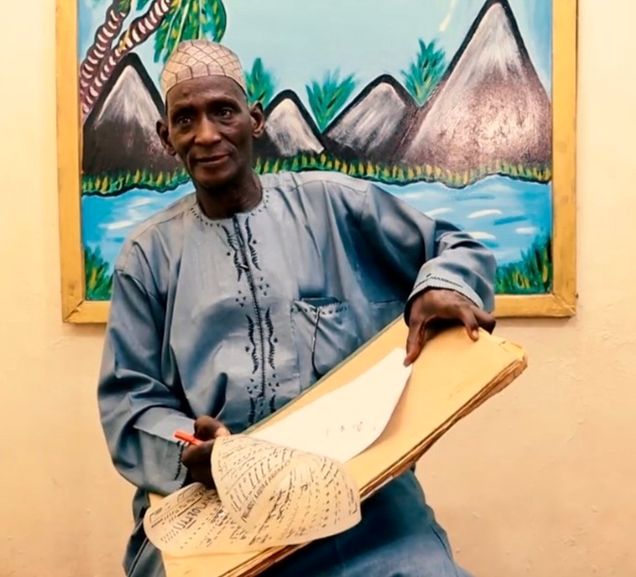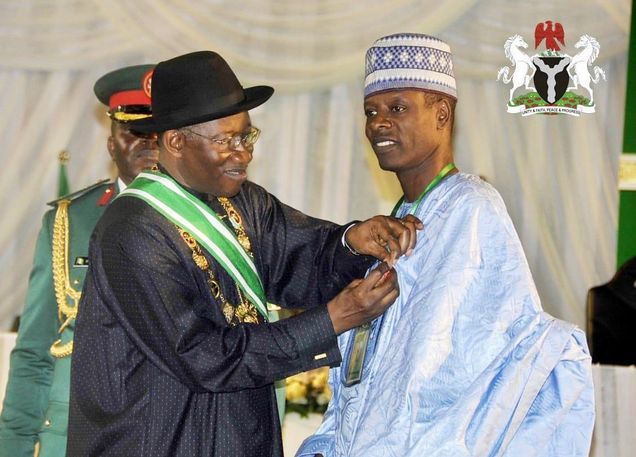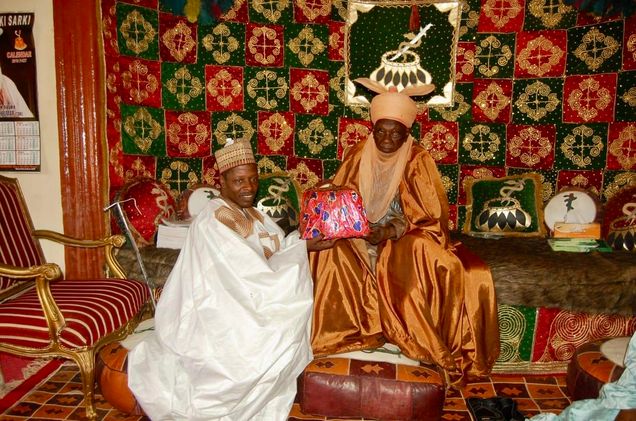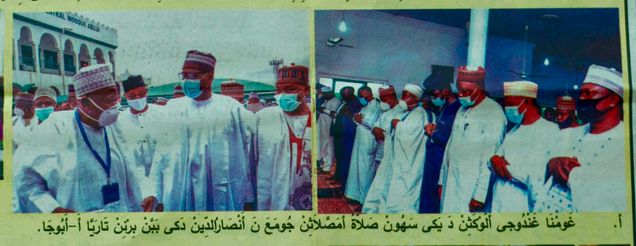Unit 6: Dr. Mustapha Hashim Kurfi
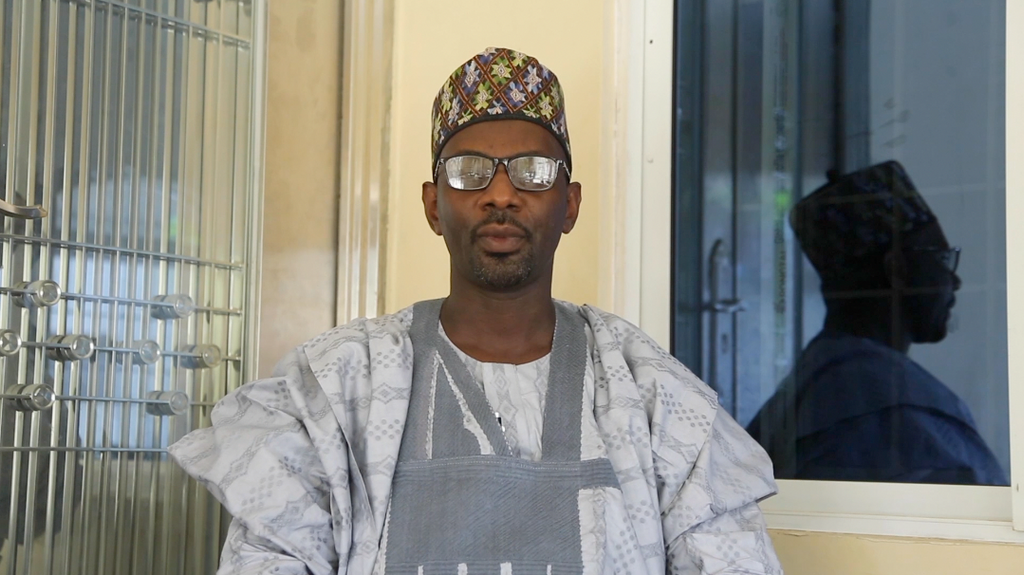
Metadata
| Title | Conversation with Dr. Mustapha Hashim Kurfi |
| Interviewer | Malam Muhammad Fu’ad |
| Subject | His life story, works on Hausa Ajami, and signage, posters, and billboards in Hausa Ajami |
| Content | Dr. Mustapha Hashim Kurfi was born in Kaduna to the families of Alhaji Hashim Khalid and Hajiya Khadija Ma’ruf. He has two Masters degrees: MSc. Sociology from Bayero University, Kano, and an M.A. in International Studies from Ohio University, USA. He also earned a PhD. in Sociology from Boston University. His major research interests are religion, Islam in Africa, gender, civil society, and Ajami studies. Dr. Kurfi served as a Senior Teaching Fellow at the African Studies Centers at Ohio University and at Boston University for nearly a decade. He digitized the Hausa, Kanuri, Fulfulde, Nupe Ajami and Yoruba Anjemi manuscripts hosted at the African Ajami Library (AAL) at Boston University. Dr. Kurfi co-edited with Toyin Falola and Fallou Ngom The Palgrave Handbook of Islam in Africa (Palgrave Macmillan, 2020). He has also authored several works in Hausa Ajami including Jagoran Koyon Hausa Ajami a Aiwace: A Practical Guide to Learning Hausa Ajami (Boston University African Studies Center, 2017) and Jagoran Koyon Hausa Ajami don Lafiyar Al’umma: Hausa Ajami Workbook for Public Health (Boston University African Studies Center, 2017). Dr. Kurfi is currently the Associate Dean in-charge of Facilities of the Faculty of Social Sciences, at Bayero University, Kano. In this interview, he provides insights into what it means to have Hausa Ajami on signage, political posters, billboards, as well as in public and private spheres. He provides policy recommendations on how to effectively utilize Hausa Ajami in the public sphere in order to demonstrate the rich cultural identity and heritage of the Hausa people. |
| Language | Hausa |
| Script | Hausa Ajami |
| Location | Kano, Nigeria |
| Pedagogical content/application | Includes relevant linguistic, stylistic, and cultural skills as identified in our assessment guidebook/ ACTFL guidelines |
| Access condition and copyright | These materials are subject to copyright and are distributed under the terms of the Creative Commons Attribution-NonCommercial 4.0 License, which permits non-commercial use, distribution, and reproduction in any medium, provided the original author and source are credited. For use, distribution or reproduction beyond these terms, contact Professor Fallou Ngom (fngom@bu.edu). |
| Contributors | Fallou Ngom, Jennifer Yanco, Mustapha Kurfi, Daivi Rodima-Taylor, Alison Parker, and Frank Antonelli. |
| Required citation information | Fallou Ngom (PI), Jennifer Yanco, Mustapha Kurfi, and Daivi Rodima-Taylor. 2023. “Conversation with Dr. Mustapha Hashim Kurfi.” https://sites.bu.edu/ria/hausa/hausa-unit-6/ |
Videos
Hausa with English Subtitles
Hausa with Latin Script Subtitles
Community Images
(click on the image for a larger view)
Pedagogical Activities
Glossary
- Allo: Wooden slate for writing lessons in Quranic schools
- Ankara: To realize, pay attention, take notice, be alert
- Babban digiri: Master’s degree, higher degree
- Basaja: To disguise
- Bincike: Research, investigation
- Ɓad-da-bami: A trick, tongue-twister
- Doki: Horse
- Fassara: To translate, interpret, explain, expound (from Arabic)
- Jarida: Newspaper
- Jaridar Tabarau: Name of a Kano-based Hausa Ajami newspaper
- Kai-tsaye: Direct, without hesitation, straight forward
- Kamfanonin sadarwa: Communication company
- Karin magana: Proverb
- Kuturi: The hindquarters of a horse
- Kyautata: To improve, enhance, beautify
- Ƙwarin gwiwa: Support, encouragement
- Makaranta: School, institute
- Mu’amala: Business transaction, economic relationship
- Mulki: Rule, government, leadership, control
- Munana: To worsen, humiliate, make ugly
- Sakamako: Result, outcome, reward
- Sake haihuwa: Rebirth, reinvigorate
- Tabarau: Eyeglasses
- Yi wa ƙasa hidima: To serve the nation
- Zomance: To transform, convert
Notes
- Allunan tallace-tallace: This refers to billboards or signboards used for advertising generally placed on roadsides or in busy areas to draw people’s attention. It comes from alluna (the plural form of allo which refers to a writing board used in Quranic schools) and tallace-tallace which is advertisement.
- Gidan Goldie, Kano: “Goldie’s house, Kano.” This refers to Goldie’s Home in Kano, an old historic two-story colonial era building in downtown Kano, which serves as the center for buying and storing products such as cotton, groundnuts, animal hides, fertilizers, and so on. It is located on Niger Street in the Fagge Local Government area in the heart of the city’s central business area, near the Kano Central Rail Station. The name comes from Sir George D. T. Goldie who was the first Governor of the Northern Protectorate in colonial Nigeria. The Hausa Ajami phrase Gidan Goldie Kano was inscribed on Goldie’s home so that local farmers who were literate in Ajami could easily locate the place where they should unload their produce.
- Gidan Sarkin Ilorin: “Home of the Emir of Ilorin.” This refers to the royal home of the Emir of Ilorin, which is in the locality called Unguwar Sarki in Kaduna state. It is located on the busiest road in Kaduna called Ali Akilu Road. Just like Goldie’s Home, the phrase Gidan Sarkin Ilorin (Home of the Emir of Ilorin) in Hausa Ajami is inscribed on the building, a common practice to indicate the homes of Emirs in Hausaland.
- Gudummawar kamfanonin sadarwa: “Contributions by the communication service providers.” This phrase is used to refer to corporate social responsibilities, i.e., the contributions that the private companies such as communication service providers ought to give to the communities from which they make profits. The interviewee in the video used the phrase to call for communication companies such as MTN, 9mobile, Globacom, and Airtel to make concerted efforts to enhance the role of Hausa Ajami in local communities where they make significant profits.
- Hausa ba dabo ba ce: “Hausa is not magic.” These words are used to describe how complicated Hausa language can be. Hausa can be confusing, especially when idioms, proverbs, and adages are involved. For instance, the true meaning of proverbs may not be the same as the literal meanings of the words. Yet, native speakers will easily understand them while non-native speakers need contextual explanations to grasp their true meanings.
- Maidoki ya koma kuturi: “The horse owner has been pushed to the back.” This is a Hausa saying that is used to describe a situation in which deserving people are downplayed, belittled, or taken advantage of. A situation in which this saying could be used is, for instance, former colonial powers who extract raw materials, manufacture them, and then return them back to their former colonies to sell them at high prices. In such cases, the manufacturers get the credit, while the real producers–the farmers, miners, and so on–are not recognized.
- Yi wa ƙasa hidima: “Serving the nation.” There are many aspects of serving the nation, including providing services in the public sector, paying taxes, engaging in voluntary services, fulfilling civic responsibilities, and so on. But the phrase yi wa ƙasa hidima has a special meaning in Hausa. It is specifically used to refer to the National Youth Services Corps (NYSC), a mandatory national program that was introduced by the military junta of General Yakubu Gowon in 1973 to foster national unity and integration. Soon after the Nigerian civil war, also known as the Biafran war (1967-1970), the country realized the need to address the tensions across its various regions. Thus, graduates from universities and polytechnic schools were required to participate in a year-long mandatory service called National Service Year. It often involved teaching in schools in regions different from one’s own. The program has been useful in fostering national unity and integration through intermarriages and appreciation of the cultural diversity of Nigeria. Journalists have contributed to the popularization of the Hausa phrase yi wa ƙasa hidima.
Exercises:
Comprehension || Writing || Listening / Speaking and Conversation || Cultural Competence
Comprehension: Video
Comprehension: Image
Writing
Listening / Speaking and Conversation
- Mutane biyu su tsaya a matsayin ɗaya ɗan jarida ne, shi kuma ɗayan a matsayin malamin makaranta. Wanda ya tsaya a matsayin ɗan jaridar ya riƙa tambayar wanda ya tsaya a matsayin malamin makarantar; suna hira.
Cultural Competence
- Zaɓi wani abu daga cikin faifan bidiyon, sai ka/ki kamanta shi da na garinku ko al’umarku. Rubuta kamanceceniya da bambancin tsakanin su.

